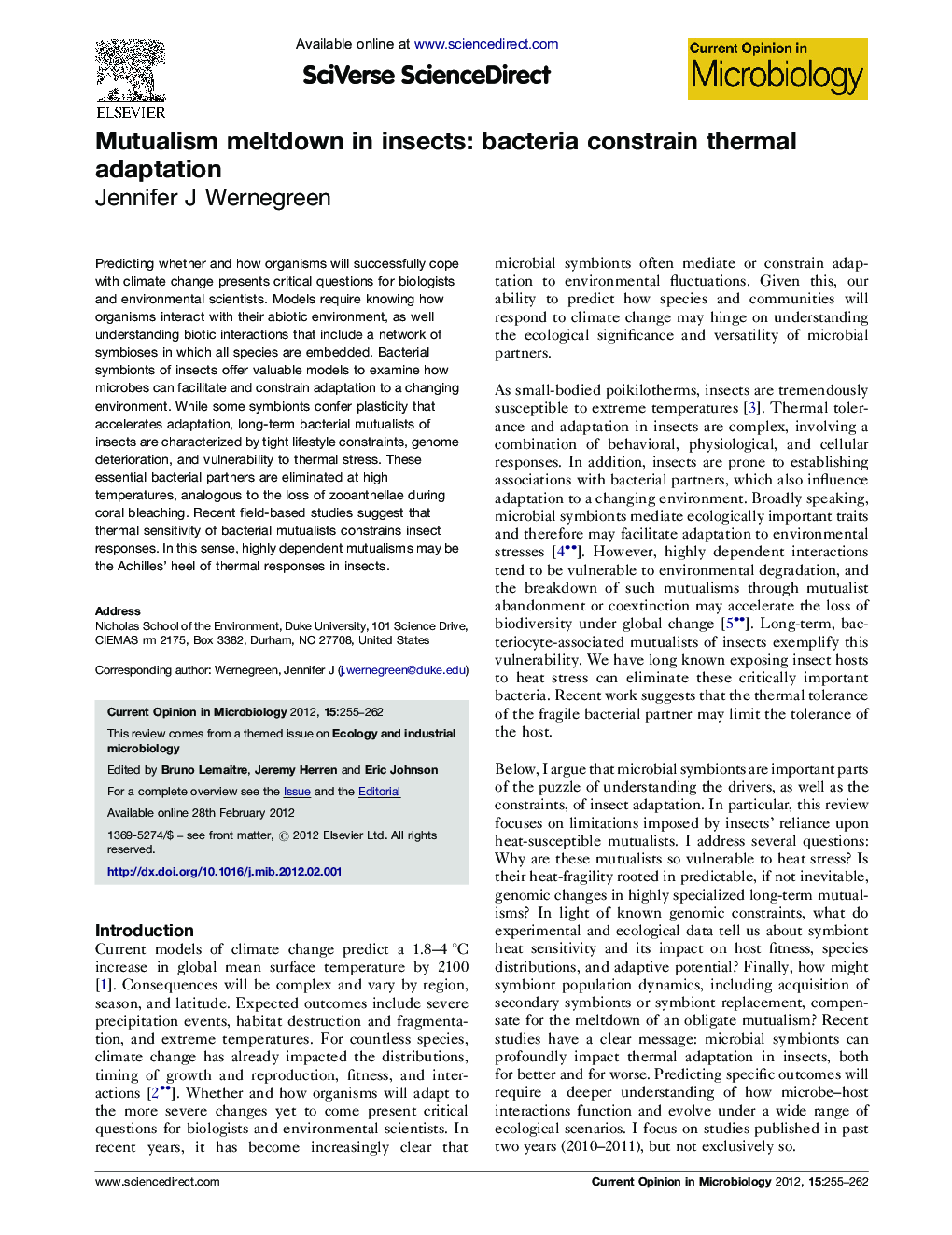| کد مقاله | کد نشریه | سال انتشار | مقاله انگلیسی | نسخه تمام متن |
|---|---|---|---|---|
| 3399254 | 1222508 | 2012 | 8 صفحه PDF | دانلود رایگان |

Predicting whether and how organisms will successfully cope with climate change presents critical questions for biologists and environmental scientists. Models require knowing how organisms interact with their abiotic environment, as well understanding biotic interactions that include a network of symbioses in which all species are embedded. Bacterial symbionts of insects offer valuable models to examine how microbes can facilitate and constrain adaptation to a changing environment. While some symbionts confer plasticity that accelerates adaptation, long-term bacterial mutualists of insects are characterized by tight lifestyle constraints, genome deterioration, and vulnerability to thermal stress. These essential bacterial partners are eliminated at high temperatures, analogous to the loss of zooanthellae during coral bleaching. Recent field-based studies suggest that thermal sensitivity of bacterial mutualists constrains insect responses. In this sense, highly dependent mutualisms may be the Achilles’ heel of thermal responses in insects.
► Theory tells us that highly dependent mutualisms are prone to breaking down under climate change.
► Bacterial endosymbionts of insects influence host fitness in a temperature-dependent manner.
► Obligate mutualists of insects encode destabilized proteins and show vulnerability to heat.
► Heat sensitivity of mutualists may constrain thermal tolerance and adaptation of insect hosts.
► We need to clarify how ecologically relevant temperatures impact insect–bacterial interactions.
Journal: Current Opinion in Microbiology - Volume 15, Issue 3, June 2012, Pages 255–262